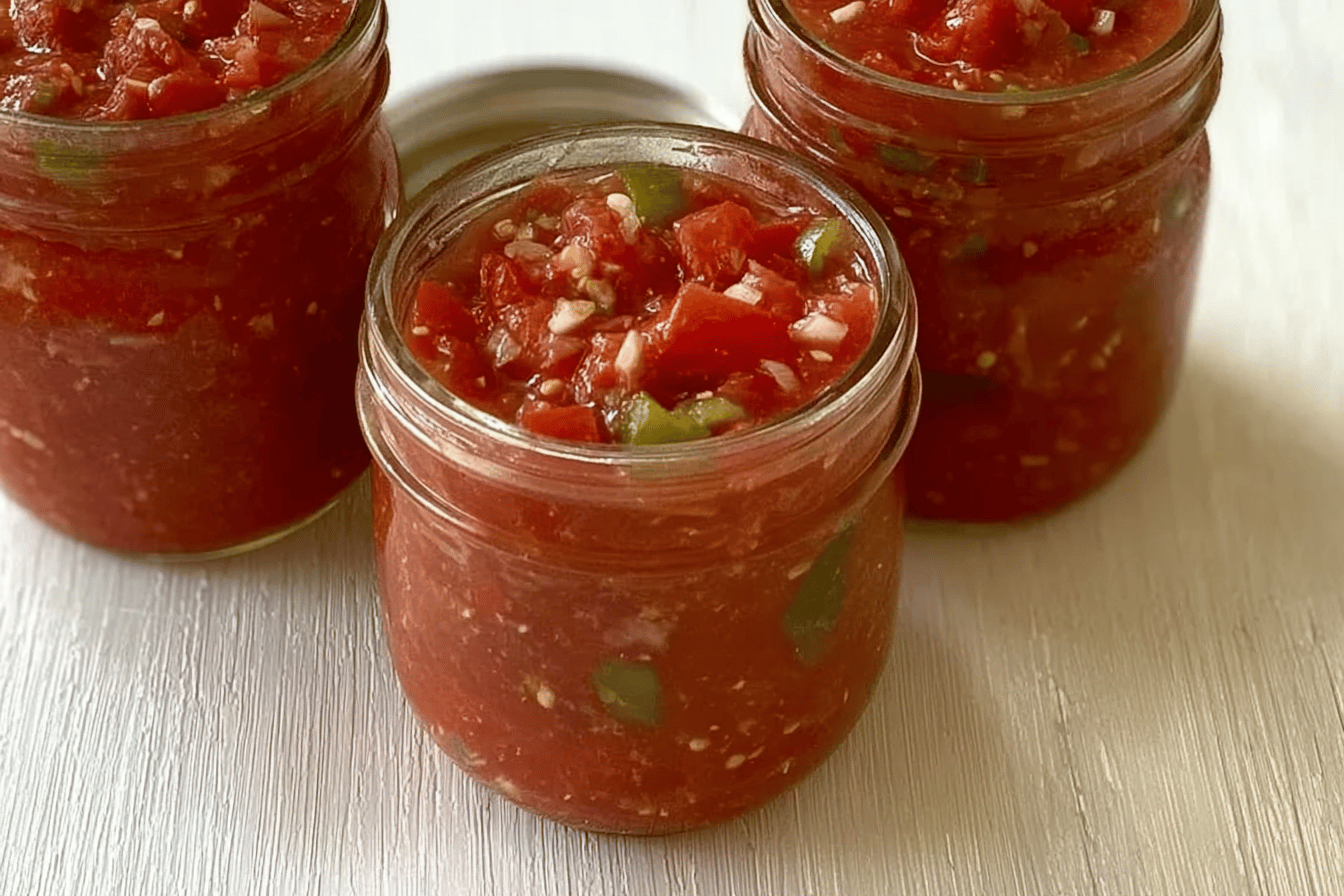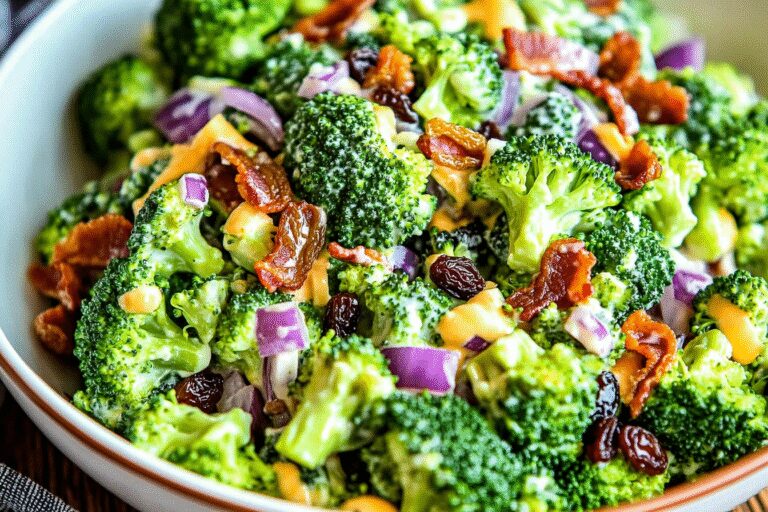Fresh Vegetable Salsa Recipe
Introduction
Fresh vegetable salsa is a versatile and healthy recipe that can be enjoyed as a delicious dip, a topping for tacos, or a side dish to complement your favorite meals. This recipe is perfect for those who love vibrant flavors and want a dish that’s quick to put together. Packed with fresh vegetables, it’s not just tasty but also nutritious. Let’s take a look at what makes this salsa recipe so special!
Detailed Ingredients with measures
For this fresh vegetable salsa recipe, you will need the following ingredients:
– Fresh tomatoes, chopped (3 medium-sized)
– Red onion, finely diced (1 small or about 1/4 cup)
– Green bell pepper, diced (1 whole)
– Jalapeño pepper, finely chopped (1 small; adjust depending on heat preference)
– Cilantro leaves, chopped (about 1/4 cup)
– Fresh lime juice (from 1 lime)
– Garlic, minced (2 cloves)
– Salt (1/2 teaspoon or to taste)
– Ground black pepper (1/4 teaspoon)
Prep Time
The preparation time for this salsa is remarkably quick. All it takes is a total of about 10 minutes to chop, dice, and mix your fresh ingredients together. That means you can whip up this recipe in no time.
Cook Time, Total Time, Yield
Cook time is nonexistent since this salsa doesn’t require heating or cooking of any sort, making it a no-fuss recipe. The total time, therefore, is the same as the prep time: just 10 minutes. When it comes to yield, this recipe typically produces about 4 servings. It’s perfect for a small gathering or as part of a meal for the family.
Conclusion
This fresh vegetable salsa recipe blends vibrant colors, fresh flavors, and simple preparation into one delightful dish. It’s the perfect addition to any table and makes a great choice for anything from parties to weeknight dinners. With just a few minutes of preparation, you’ll have a bowl of salsa that everyone will enjoy! Keep experimenting with combinations to make it your own.
“`html
Detailed Directions and Instructions
Step 1: Gather Fresh Ingredients
– Ensure all vegetables are fresh, clean, and ready for preparation.
– Select ripe tomatoes, crunchy bell peppers, crisp onions, and any desired additional vegetables for optimal taste.
Step 2: Prepare the Vegetables
– Wash all vegetables thoroughly under running water to remove dirt or debris.
– For the tomatoes, remove the core and any seeds if desired.
– Dice the tomatoes, onions, and bell peppers into small, uniform pieces for even texture.
– Chop cilantro finely to release its aroma.
Step 3: Create the Seasoning Mix
– Combine lime juice, salt, and freshly ground black pepper in a small bowl.
– Optional: Adjust seasoning amounts for desired flavor intensity.
– Stir everything together until well mixed.
Step 4: Combine the Prepared Ingredients
– In a large mixing bowl, add the diced tomatoes, onions, bell peppers, and cilantro.
– Pour the seasoning mix over the vegetables.
– Gently toss all ingredients using a spoon or fork, ensuring the vegetables are evenly coated with the seasoning.
Step 5: Taste and Adjust
– Sample the salsa to check for flavor balance.
– Add more lime juice, salt, or pepper if needed.
– Optional: Add diced jalapeño or other peppers for an extra spicy kick.
Step 6: Chill the Salsa
– Transfer the salsa into a sealed container.
– Place it in the refrigerator to chill for at least 30 minutes to allow the flavors to meld together.
Step 7: Serve and Enjoy
– Serve the fresh vegetable salsa chilled or at room temperature.
– Pair with your favorite tortilla chips or as a topping for dishes such as tacos, grilled chicken, or fish.
Notes
Note 1: Ingredient Substitutions
– You can substitute or add other vegetables such as cucumbers, corn, or avocado, depending on your preferences.
– Use fresh lime juice rather than bottled juice for the best flavor.
Note 2: Adjust Texture
– For a smoother salsa, you can use a food processor to finely chop or puree the vegetables. Pulse carefully to avoid over-processing.
Note 3: Storing the Salsa
– Store the prepared salsa in an airtight container in the refrigerator for up to 3 days.
– Stir before serving, as liquid may separate over time.
Note 4: Customizing Spice Level
– Adjust the spiciness by adding more or fewer chili peppers like jalapeños, habaneros, or serranos.
– Remove seeds and membranes of chili peppers to reduce heat.
Note 5: Serving Suggestions
– This salsa pairs well as a side dish or condiment for Mexican cuisine, grilled meats, or as a fresh, healthy dip.
“`
Cook techniques
Chopping Vegetables Uniformly
Ensure that all vegetables are chopped finely and uniformly to create a better texture for the salsa and allow the flavors to blend evenly.
Draining Excess Liquid
After chopping vegetables like tomatoes, drain any excess liquid to avoid the salsa becoming watery.
Mixing with a Gentle Hand
When combining ingredients, mix gently to avoid breaking down the vegetables too much and to keep a fresh, chunky texture.
Allowing the Salsa to Rest
Let the salsa sit for 30 minutes to an hour after preparation. This resting time allows the flavors to meld together for a more robust taste.
Adjusting for Taste
Taste the salsa before serving and add more salt, lime juice, or spices as needed to suit your preference.
FAQ
What vegetables can I include in salsa?
You can include tomatoes, onions, bell peppers, jalapenos, and herbs like cilantro. Customize the mix to your preference for flavor and texture.
How long can fresh vegetable salsa be stored?
Fresh vegetable salsa can be stored in an airtight container in the refrigerator for up to 3 days.
Can I use canned tomatoes instead of fresh ones?
While fresh tomatoes are recommended for the best flavor, you can use canned tomatoes if fresh ones are unavailable. Drain them well to avoid excess liquid.
Is there a way to make salsa less spicy?
To reduce the spiciness, remove seeds and membranes from the jalapenos or reduce the amount of spicy peppers used in the recipe.
Can I freeze fresh vegetable salsa?
Fresh vegetable salsa is not ideal for freezing as it can lose its texture. It’s best enjoyed fresh within a few days of preparation.
What can I serve with vegetable salsa?
Vegetable salsa pairs well with tortilla chips, grilled meats, tacos, and even as a topping for salads or baked potatoes.

Conclusion
Fresh vegetable salsa is a versatile and delightful addition to any meal. Its vibrant mix of flavors and colors not only enhances the taste of your dishes but also provides a healthy, fresh option you can prepare with ease. Whether it’s a quick snack, a party appetizer, or a side dish to a hearty main course, this salsa is sure to impress. Experiment with the ingredients and tailor it to your taste preferences for a truly personalized touch. Happy preserving and enjoying!
More recipes suggestions and combination
Spicy Corn Salsa
Try mixing fresh sweet corn, chopped jalapeños, lime juice, and cilantro for a sweet and spicy twist.
Fruit-infused Salsa
Combine diced mango, pineapple, or watermelon with traditional salsa ingredients for a refreshing fruit-infused variation.
Avocado Salsa
Mash avocados and blend them into your salsa for a creamy and rich taste.
Black Bean Salsa
Add cooked black beans and a hint of cumin to the salsa for a protein-packed flavor.
Tomatillo Salsa Verde
Try a green salsa by roasting tomatillos, onions, garlic, and blending them together with fresh cilantro.
Chunky Vegetable Salad
Keep the vegetables chunkier and serve as a salad dish instead of a smooth salsa.
Roasted Salsa
Roast all the vegetables before blending to give a smoky, robust flavor to your salsa.
Salsa with Herbs
Experiment with fresh herbs like parsley, mint, or basil for a unique twist to traditional salsa.
Asian-inspired Salsa
Add ginger, soy sauce, and sesame oil to your fresh salsa mix for an Asian-inspired flair.
Pickled Salsa
Preserve your salsa by pickling it with vinegar, salt, and sugar for a tangy, long-lasting side dish.







